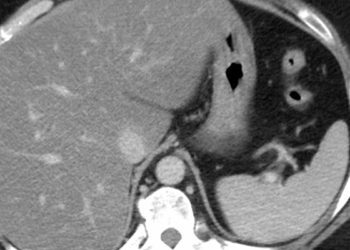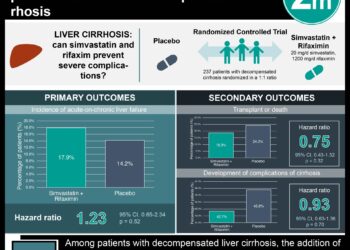Hepatitis C seroconversion may speed progression of liver fibrosis
1. Medical decision making in patients with hepatitis C (HCV) may be aided by knowing the likely rate of liver fibrosis.
2. Seroconversion for HCV increased the rate of liver fibrosis and hastened eventual development of cirrhosis.
Evidence Rating Level: 3 (Average)
Study Rundown: This study sought to better characterize the natural history of hepatitis C (HCV) related liver disease. Understanding the influence various factors have on the rate of progression of liver disease is essential for making treatment decisions, and would decrease the need for invasive tests such as liver biopsy. The study authors found that seroconversion for HCV patients had earlier progression of liver fibrosis, and HCV positive patients were more likely to have a diagnosis of cirrhosis as compared to the control group.
The midpoint between the last negative test result and the first positive result was established as the patient baseline. Notably, the median time between this last negative and first positive result was 41 months, which demonstrates the imprecision of this estimation. Progression of liver fibrosis in both these patients and in uninfected controls was determined via estimation using laboratory data. The advantage of using this estimation is that all patients were not required to have a liver biopsy, which would have decreased the number of available data points and potentially excluded patients limited by insurance issues or transportation to the hospital to get this invasive test. This measure remains an estimation of fibrosis, and is not the gold standard measure. Moreover, the HCV positive group in this study had a higher prevalence of drug and alcohol abuse and dependence, and although authors attempted to control for this, it may represent a confounding factor.
Click to read the study in JAMA Internal Medicine
Relevant Reading: AST-platelet ratio index, Forns index and FIB-4 in the prediction of significant fibrosis and cirrhosis in patients with chronic hepatitis C
In-Depth [case-control study]: The study collected data from the ERCHIVES (Electronically Retrieved Cohort of HCV-infected Veterans) for the purpose of identifying newly diagnosed patients, and patients that were uninfected with HCV (controls) between 2001 and 2012. Patients with HCV were identified by a positive antibody blood test and with a confirmatory HCV RNA test subsequently. Exclusion criteria included HIV or HBV infection, and cirrhosis or hepatocellular carcinoma due to other intrinsic liver disease. Progression of liver disease was estimated using the Fibrosis-4 index (FIB-4), a validated measure of fibrosis which is calculated using the AST, ALT, and platelet count.
1840 HCV+ cases and 1840 age, gender, and sex matched controls were included in analysis. Baseline was the midpoint between last negative and first positive dates for patients, and the midpoint between negative and the next negative test result dates for controls. Time at risk was defined by time from baseline till first diagnosis of cirrhosis (determined by FIB-4 fibrosis index), first HCV treatment date, death, first event of acute liver decompensation, or last data point in the ERCHIVES database described above. Fibrosis was found to start early and was most progressive during the first five years, and continued for 11 years, and was persistently higher in HCV+ individuals. After 10 years follow-up, 18.4% of HCV+ patients had developed cirrhosis, as compared to 6.1% of controls. HCV+ patients also developed hepatic decompensation events significantly more quickly than controls.
More from this author: Hyperbaric oxygen does not significantly improve post-concussion symptoms, Increased orexin levels linked with poor sleep quality in Alzheimer Disease, Antibiotic prescription patterns in China may contribute to resistance, Glatiramer acetate (Copaxone) therapy may alter B cell function in multiple sclerosis
Image: PD
©2014 2 Minute Medicine, Inc. All rights reserved. No works may be reproduced without expressed written consent from 2 Minute Medicine, Inc. No article should be construed as medical advice and is not intended as such by the authors, editors, staff or by 2 Minute Medicine, Inc.






